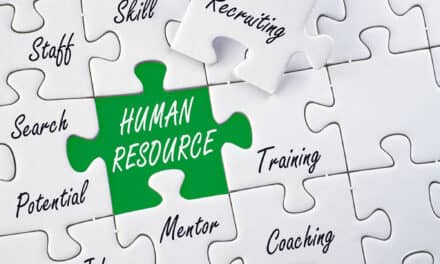It’s your practice, but you can’t run it alone. That’s why you have a team. You depend on them to manage the practice while you’re treating and interacting with patients. The better trained your staff is, the more successful your practice will be.
Training is a necessity, but it also presents challenges. Where does the training take place? Is it right for every staff member? Will you have to close the practice? What specific training does my team need individually and collectively? What about yourself?
As orthodontics continues to evolve, what clinical training do you need? What about business and management skills?
Many of us tend to view training as a one-time event. It’s a course you attend or a webinar you watch, but training is much more than a singular occurrence. In fact, I will argue that training should be viewed as an ongoing series of activities that happen inside and outside the practice. Actually, most training takes place in the practice… because that’s where you and your team spend the majority of your time.
Let’s look at the four ways you can train your staff, upgrade their skills (along with your own) and, ultimately, improve practice performance.
1. Take advantage of in-office opportunities
Orthodontic practices are busy, complex small businesses with team members moving in multiple directions based on their responsibilities and assignments. That’s why effective communication is critical for ensuring a smoothly run practice. Meetings represent one of the best opportunities for not only sharing information but also training the team.
Most orthodontic practices hold a morning huddle—a brief 10-minute meeting to preview the day’s schedule, including consults, records appointments, emergencies, and special circumstances. In addition, these gatherings can be a great way to provide short bursts of training, reminding team members about proper procedures, reinforcing new protocols, and reviewing customer service scripts.
Practices should also schedule a monthly staff meeting, which typically should be 60 to 90 minutes in length. These meetings focus on bigger issues, such as customer service breakdowns and system bottlenecks. Once solutions are devised, use a portion of the meeting for training the team on new protocols, role-playing scripts, and helping staff members fully understand their roles and responsibilities.
In addition to formal training that occurs in meetings, there are informal opportunities throughout the day when the orthodontist or office manager can mentor and encourage staff members. These micro-moments add up over time especially when they’re related to other recent training.
2. Implement documented systems and train the team on those systems
For more than 30 years, I’ve been a huge proponent of systems. Most orthodontic practices have systems; the problem is that many of these systems are outdated and undocumented. Instead of being written down, systems are “located” in the minds of employees. When these staff members are on vacation or eventually leave the practice, they take the systems with them, which creates huge problems for the other team members.
By implementing documented systems, your team has policies and checklists that are easy to follow. When systems are standardized (instead of individualized), then everyone is operating from the same playbook, enabling the practice to operate similarly and predictably from day to day. In addition, scripts should be created to support each system. Scripts train team members in how to communicate properly during patient and parent interactions regarding a particular system (eg,
scheduling).
Many people have the wrong idea about scripting… that scripts should be memorized word for word. This is incorrect. Scripts should be used as talking points… you want your employees to convey the essential information in their own words. You also want your staff to have genuine interactions with patients and parents, not worried about forgetting the exact wording of a script.
3. Engage in off-site training activities
It’s good for you and the team to get out of the office together. Whether it’s going to a workshop or hosting a meeting at a restaurant, stepping outside the office enables team members to have a different perspective about their role in the practice… what can be done to improve particular systems… and how everyone can work together more effectively.
While in-office training is essential, it can be incredibly challenging. Phones are ringing. People are concentrating on their jobs rather than the training itself. The lure of distractions can be difficult to overcome. Getting out of the office can provide both a physical and mental break from daily activities, enabling the team to focus on the actual training rather than their normal duties.
Off-site training also offers a wider range of learning opportunities for clinical and administrative personnel. I would advise orthodontists to invest in a mix of both individual and team training. Some subjects are position-specific, such as insurance coding or infection control, while others, like customer service scripting, apply to the entire team. An added benefit of off-site training is that it can be a great way to build a stronger team. Staff members not only attend many of the same classes, but also spend time together at breaks and meals, which can help break down barriers and turn a group of individuals into a unified team.
4. Be the example
You may not realize it, but as the practice leader, you drive the culture of your office, and your team will often model their behavior on your actions and attitude. Do you come to the office in a positive frame of mind? Do you call team members by their name and treat others with respect? How do you respond to adversity? Do you keep calm or do you lose your temper? Are you the best leader and employee you can be?
When you bring your “A” game to the practice every day, you demonstrate in word and deed how an orthodontic professional should act. That’s educational and inspirational for your team.
Conclusion
Orthodontics is evolving, and so is the business of running a successful practice. Providing the best orthodontic care requires keeping your team’s skills updated. Use these four training methods to build a better team… and a better practice. OP






